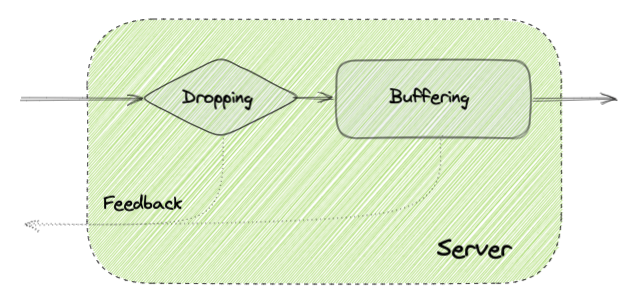Handling back-pressure in RTC services

In the context of software, back-pressure refers to actions taken by systems to “push back” downstream forces. As such, it is a defensive action taken unilaterally while under duress or if the aggregate call pattern exhibits too many spikes, or is too bursty. This approach is commonly used in microservices infrastructures but we don't talk too much about it in the context of Real-Time Communication platforms even if they can be equally important to handle spikes of load while keeping the quality of service inside some reasonable limits. During times of spikes or burstiness, the quality could be slightly degraded but it should still be usable and the servers should never go down. The typical techniques to apply back-pressure and get some protection against those unsustainable patterns of traffic are buffering, dropping, and controlling the sender: Buffering : Messages can be queued and processed at a lower rate when needed to limit the impact of spikes or high load. Dropping ...